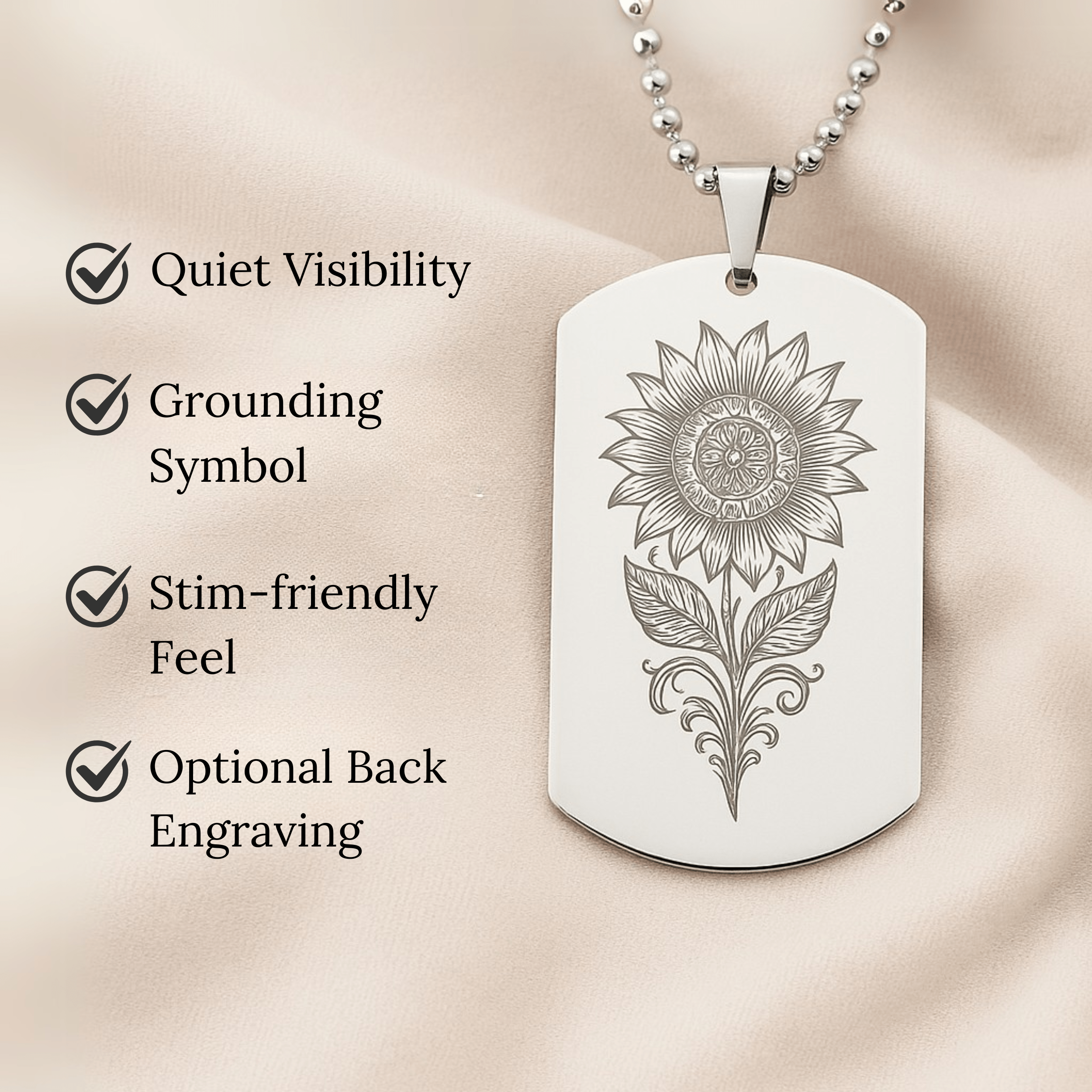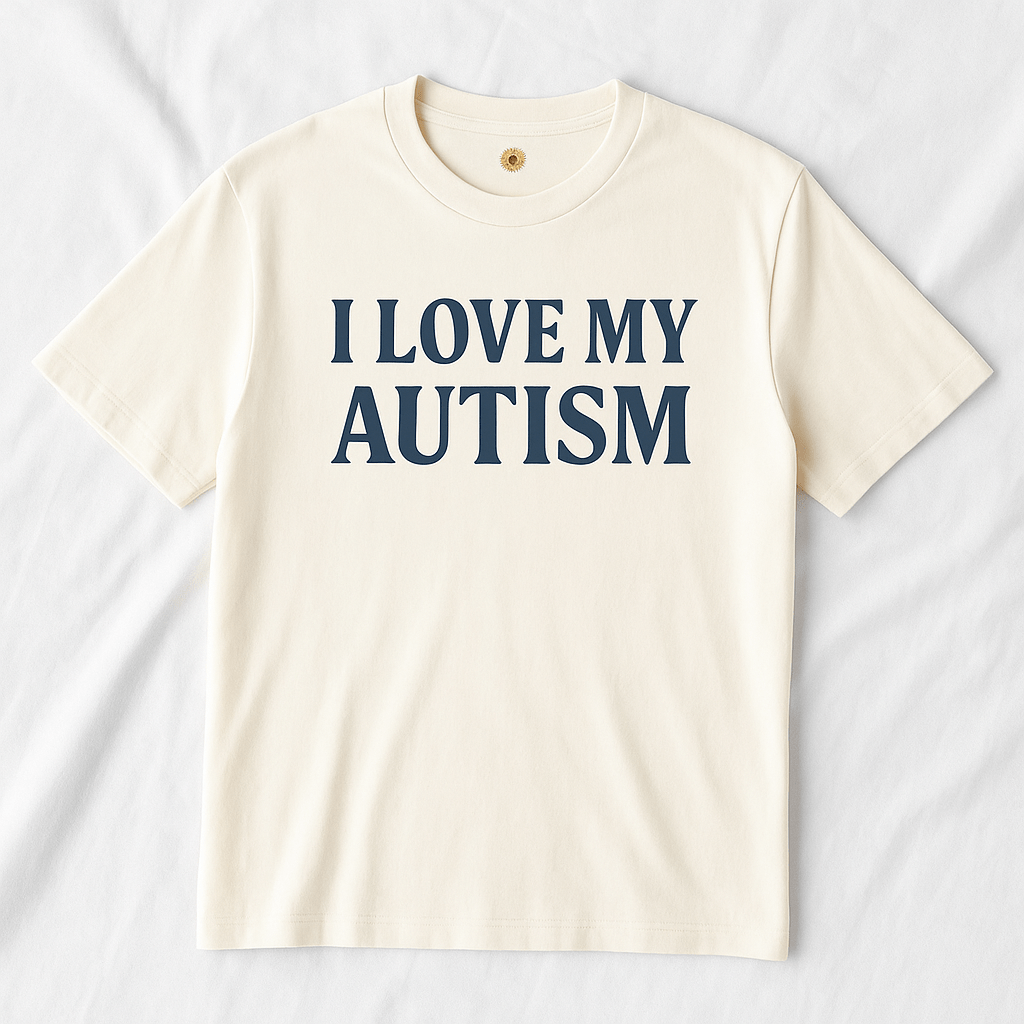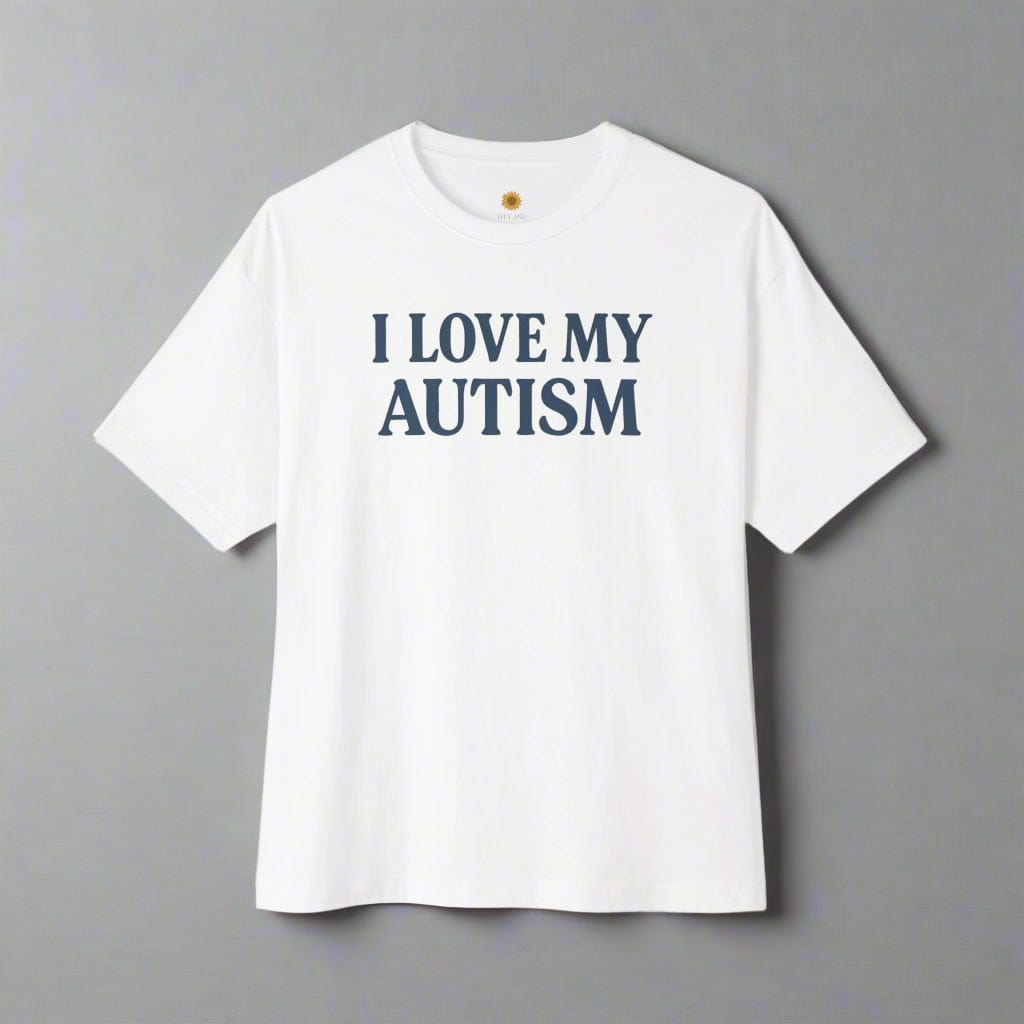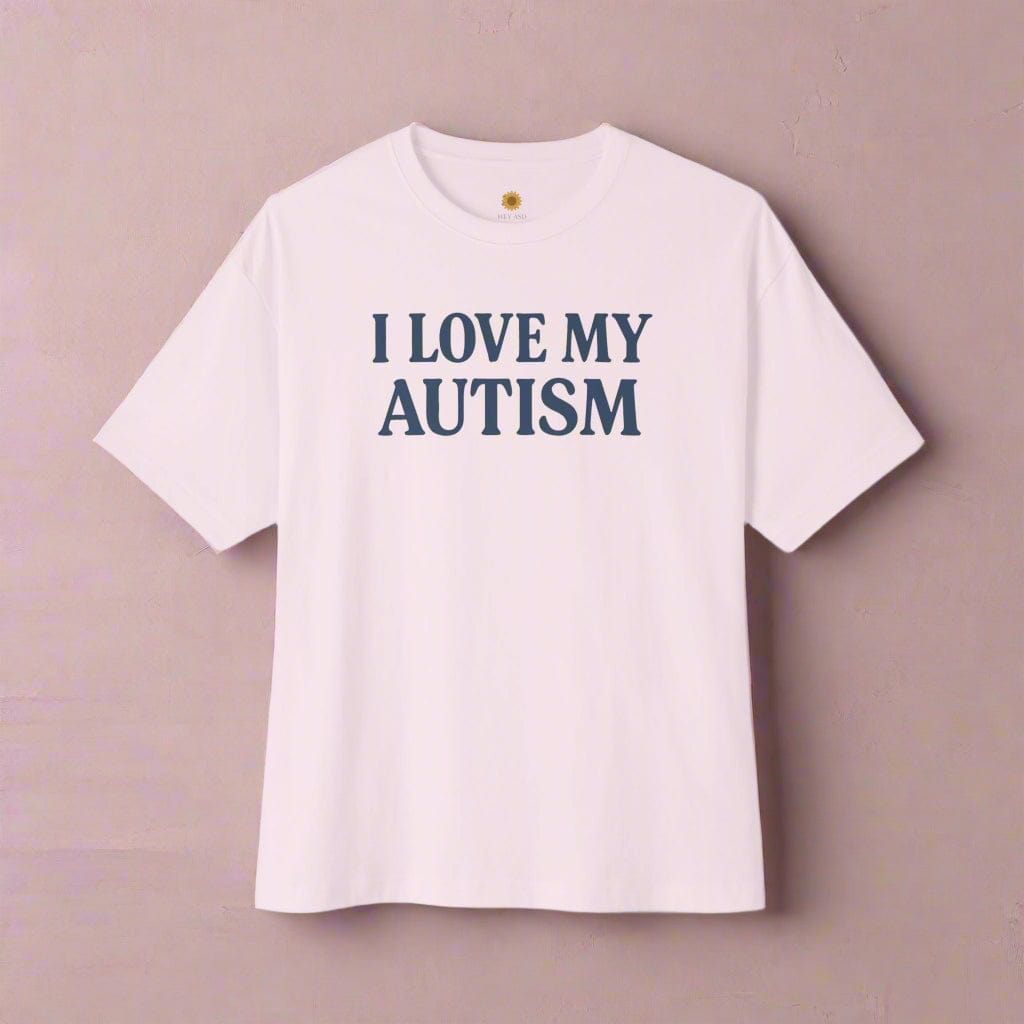Stimming in Adulthood: Why It’s Normal, Valid, and Essential for Autistic Adults
Stimming doesn’t disappear when we grow up. For autistic adults, it’s a vital part of self-regulation, expression, and survival in a world that rarely bends to meet us. Far from being a habit to outgrow, stimming is a language of comfort and resilience — one that deserves recognition, not suppression.

Written by the HeyASD Editorial Team
Stimming in adulthood is often misunderstood, but for autistic adults, it’s not strange or childish — it’s survival, expression, and comfort. These repetitive movements or sounds are far more than habits; they are a natural way to regulate emotions, process sensory input, and stay grounded in a world that rarely feels designed for us. From the subtle tap of a finger to the joyful flap of hands, stimming is both a coping mechanism and a language — one that deserves to be recognized as normal, valid, and deeply human.
Stimming isn’t something to outgrow. For autistic adults, it’s a rhythm of survival, comfort, and expression.
Understanding Stimming in Adults
Stimming behaviors in adulthood are just as valid and necessary as they are in childhood, though they might look different. For many on the autism spectrum, stimming is an essential tool for navigating a world that can be overwhelming with sensory input. It’s a core part of the neurodiversity movement to see stimming not as a problem, but as a solution.
This section will explore what stimming really is, how it evolves as you grow, and why it remains a crucial part of your life.
What is Stimming?
So, what exactly is stimming? The term is short for self-stimulating behaviors. It refers to any repetitive actions or sounds you make to help cope with your emotions or the sensory world around you. Think of it as a personal tool for self-soothing. You might stim when you feel overwhelmed, anxious, excited, or even bored.
Almost everyone stims — but for autistic people, it’s not a quirk. It’s a lifeline.
These repetitive behaviors are a form of sensory stimulation that can be incredibly grounding. Whether it’s tapping your fingers, twirling your hair, or rocking gently, stimming serves an important purpose. It’s a coping mechanism that helps you regulate your nervous system and feel more in control.
It’s important to remember that almost everyone stims in some way. However, for autistic people, stimming is often more frequent, more noticeable, and far more essential for navigating daily life. It’s a fundamental part of the autistic experience.
Stimming Across Life Stages: Childhood vs. Adulthood
The way you stim can change significantly from childhood to adulthood. As a child, stimming might have been more obvious, like full-body rocking or hand flapping. These forms of stimming are often very effective but may attract unwanted attention, leading many to adapt their behaviors over time.
As children, our stims were visible. As adults, they’re often hidden — but no less vital.
As an adult, you may have developed more subtle or "socially acceptable" repetitive actions to manage your needs. This is often a form of masking, where you try to hide your autistic traits. Your stims might be less noticeable, but they are just as important for your well-being. What does stimming look like in adults? It can be anything from jiggling your foot during a meeting to repeatedly flexing your toes inside your shoes.
Here’s how stimming can differ between childhood and adulthood:
|
Aspect |
Childhood Stimming |
Adulthood Stimming |
|---|---|---|
|
Visibility |
Often more visible and involves larger movements (e.g., spinning, jumping). |
Tends to be more subtle and less noticeable to others (e.g., finger tapping, whistling). |
|
Social Context |
Less social awareness of how the stim is perceived by others. |
Often adapted or "masked" to fit social and professional expectations. |
|
Examples |
Full-body rocking, flapping hands excitedly, lining up toys. |
Fiddling with jewelry, pulling hair, humming quietly, using a stim toy discreetly. |
|
Purpose |
Primarily for sensory regulation and expressing intense emotions openly. |
Still for regulation and expression, but also to manage workplace stress and avoid negative attention. |
The Purpose and Benefits of Adult Stimming
Why do autistic adults engage in stimming, and what purpose does it serve? Stimming is far from a meaningless habit; it is a highly effective coping mechanism with real benefits. It helps you manage sensory overload, regulate your emotions, and stay grounded in overwhelming situations. In a world not built for autistic people, stimming is a lifeline.
Every repetitive movement tells a story: of regulation, of relief, of finding calm in chaos.
Next, we’ll explore how these stimming behaviors provide comfort and self-regulation, and how they can be a powerful form of personal expression.
Self-Regulation and Comfort Through Stimming
One of the primary benefits of stimming is self-regulation. When you feel a rush of intense emotions or are bombarded by sensory input, that energy needs an outlet. Repetitive movements provide a predictable and rhythmic way to channel that energy, which can calm your nervous system.
Can stimming help you manage stress or sensory overload? Absolutely. If you are in a situation with too many sounds or lights, stimming can help you focus on a single, manageable sensation. Conversely, if you feel understimulated or bored, a stim can provide the sensory input you need to stay engaged and alert.
This process allows you to feel more grounded and present. Whether you’re consciously choosing to stim or doing it automatically, you are using a powerful, built-in tool to find comfort and maintain balance in your environment.
Stimming as a Form of Emotional Expression and Identity
Stimming isn't just about managing stress or negative emotions. It's also a way to express your full range of emotional states, especially positive emotions. Have you ever flapped your hands or bounced in place when you felt a surge of joy or excitement? That is happy stimming, and it’s a beautiful and authentic expression of your feelings.
When I flap my hands, I’m not being ‘silly.’ I’m being honest — with my body, with my joy.
These actions provide sensory feedback that can amplify your joy and help you fully experience the moment. In a world where autistic people are often expected to suppress their feelings, autistic stimming offers a way to communicate emotions honestly and without filters. It is a language of its own.
Embracing your stims is also a way of embracing your autistic identity. It is a rejection of the idea that you need to change to fit in. Your stims are a part of you, a rhythm that helps you navigate the world. Recognizing their value is a step toward self-acceptance and autism pride.
Recognizing Common Types of Stimming in Adulthood
Stimming is incredibly diverse and personal. What works for one person may not work for another. The common forms of stimming are often categorized by the senses they involve. These repetitive motor movements can be subtle or more pronounced, but they all serve the same regulatory purpose.
Let’s look at some of the different types of stimming behaviors you might recognize in yourself or other autistic adults.
Physical and Movement-Based Stims
Physical stims are perhaps the most well-known form of stimming. These involve repetitive movements of your body, hands, or limbs. While some, like hand flapping, are commonly associated with autism, many are so subtle that they go unnoticed by neurotypical people.
These movements can help release physical tension, manage physical discomfort, or provide a grounding rhythm. What does stimming look like in adults physically? It can take many forms, from large, whole-body movements to small, repetitive actions with your fingers. This type of stimming is a direct way to regulate your body's energy.
Common physical stims include:
-
Hand flapping or flicking your fingers
-
Rocking your body back and forth or side to side
-
Pacing or walking on tiptoes
-
Tapping your fingers, feet, or a pencil
-
Clenching and unclenching your fists
Auditory, Visual, and Mental Stims in Daily Life
Beyond physical movements, stimming can engage your other senses. These stims provide auditory, visual, or cognitive sensory stimulation that can be just as calming and regulating as physical ones. They are often quiet and internal, making them a common choice for adults in public or professional settings.
Auditory stims involve making repetitive sounds, while visual stimming uses your sense of sight. Mental stims are cognitive and might not be visible to anyone else. These repetitive actions help focus the mind and block out overwhelming external stimuli.
Here are a few examples:
-
Auditory: Humming, whistling, or repeating certain words or phrases (echolalia).
-
Visual: Staring at spinning objects like fans, blinking repeatedly, or looking at lights.
-
Tactile: Rubbing or scratching your skin, or stroking soft textures.
-
Mental: Rearranging objects, reciting facts, or thinking about a specific topic in detail.
Healthy and Harmful Stimming: Finding Safe Outlets
All stimming is valid because it serves a purpose. However, some stims can cause physical harm, like head banging or excessive skin scratching. In these cases, the goal is not to stop stimming but to find safer ways to get the same sensory input. The focus should always be on adaptation, not suppression.
Creating a safe space to explore different stims can help you find healthy and sustainable outlets for your regulatory needs.
✨ Find Comfort in Your Own Rhythm
From sensory blankets to stim-friendly jewelry, our Emotional Regulation Collection is designed for autistic adults who deserve comfort without compromise.
Discover More ComfortIdentifying When Stims Need Adaptation or Support
Are there risks associated with stimming in adulthood? The primary risk is when a stim causes physical harm to you or others. Behaviors like hitting yourself, severe biting, or picking at skin until it bleeds are signs that an adaptation is needed. The stim itself isn't bad, but its impact is.
Another reason for adaptation is if a stim significantly interferes with your daily life, learning, or work, or causes extreme social isolation. While societal judgment is a separate issue, if a stim is causing you distress or attracting constant unwanted attention, finding a less disruptive alternative might improve your well-being. This is different from a diagnosis of stereotypic movement disorder, which is a clinical term often used outside the context of neurodiversity affirmation.
The key is to ask why the stim is happening and what need it’s meeting. With support, you can find a different behavior that fulfills the same function without the negative consequences.
Safe Alternatives and Creative Tools for Stimming Adults
If a stim is causing harm, you can channel that energy into safer, more sustainable behaviors. The goal is to find useful coping mechanisms that provide similar sensory input. For example, if you hit yourself for deep pressure input, you could try squeezing a stress ball or using a weighted blanket.
There are many creative tools designed for this purpose. Exploring different options can be a great way to build a personal toolkit for self-regulation. Look for items that match the sensory experience you need, whether it's tactile, oral, or kinetic. You can find many of these, from autism jewelry to sensory blankets, at a dedicated autism store.
Here are some safe alternatives and tools:
-
For tactile needs: Squeeze a stress ball, play with therapy putty, or wear clothes with interesting textures.
-
For oral needs: Use chewable jewelry (often called "chewelry") or chew gum.
-
For movement needs: Use a fidget spinner, a small foot-rocker under your desk, or pace in a designated safe space.
-
For deep pressure: Use a weighted lap pad or
sensory blankets.
Navigating Stigma and Acceptance of Stimming in Society
One of the biggest challenges for stimming adults is not the stim itself, but the social stigma surrounding it. Unwanted attention, judgment from others, and pressure to appear "normal" in social situations can be exhausting. This can lead to masking your stims, which comes at a high cost to your mental health.
The problem isn’t that autistic adults stim — it’s that society hasn’t learned to accept it.
Ultimately, the path forward is not to hide, but to foster greater acceptance of stimming as a natural and necessary part of human diversity.
Workplace Realities, Masking, and Internalized Shame
How do society and workplaces view adult stimming? Unfortunately, many environments are not accepting. In a professional setting, there is often intense pressure to conform. This pressure leads many autistic adults to engage in masking—the conscious or unconscious effort to hide stimming behaviors.
While masking might help you avoid negative attention in the short term, it is incredibly draining. Constantly suppressing your natural regulatory behaviors can lead to autistic burnout anxiety, and depression. This is compounded by internalized shame, which can develop after years of being told to "stop fidgeting" or being subjected to therapies like ABA therapy that aim to extinguish these behaviors.
🌿 Free Support Tools for Autistic Adults
Our Autism AI Tools were created by autistic adults to help with scripts, self-advocacy, and daily calm. Think of them as a companion for the moments when stimming isn’t enough.
Explore Free Support ToolsThis cycle of shame and suppression seriously impacts your mental health. Acknowledging the harm that masking causes is the first step toward unlearning this shame and finding healthier ways to exist in the workplace.
Becoming Comfortable Stimming Around Others
How can you become more comfortable stimming around other people? It's a gradual process that starts with self-acceptance. Acknowledge that stimming is a valid need, not a flaw. Begin by allowing yourself to stim freely in a safe space, like your home, and then with trusted friends or family.
You might choose to explain your stimming to people you trust. A simple explanation like, "This movement helps me focus/stay calm," can demystify the behavior for others and foster acceptance. You are not obligated to explain yourself, but doing so can sometimes create a more supportive environment.
Ultimately, reclaiming your right to stim in social situations is an act of empowerment. It improves your quality of life by reducing the energy you spend on masking. Finding your community through platforms like the HeyASD autism app can connect you with other autistic adults who understand and validate your experience, making it easier to be your authentic self.
Key Takeaways: Stimming in Adulthood
- Stimming is normal — it’s not something to “outgrow,” but a lifelong tool for regulation, expression, and comfort.
- Childhood vs. adulthood — stims may shift from obvious movements to subtler actions, but they remain equally essential.
- Purpose & benefits — stimming helps manage stress, prevent overwhelm, and amplify joy, acting as a natural coping mechanism.
- Expression of identity — stimming is part of autistic pride, offering an authentic way to communicate emotions and selfhood.
- Healthy vs. harmful — all stimming has value, but some forms may need safer adaptations to prevent physical harm.
- Stigma & masking — pressure to hide stims can cause burnout and shame; acceptance is key to autistic well-being.
- Safe outlets — tools like fidgets, sensory jewelry, or weighted blankets provide supportive alternatives when needed.
- Empowerment — reclaiming your right to stim openly builds confidence, reduces exhaustion, and fosters neurodiversity acceptance.
Conclusion
Stimming in adulthood is not something to fix or hide — it’s a lifeline, a rhythm, and a truth of autistic existence. Every tap, rock, or hum carries purpose: easing overwhelm, expressing joy, or anchoring us when the world feels too much.
Stimming is not a flaw to fix — it’s a language, a rhythm, a lifeline.
By embracing stimming instead of suppressing it, we affirm autistic identity and create space for pride, not shame. To stim freely is to live authentically — and to remind ourselves that comfort is not a luxury, but a right.
On This Page
Frequently asked questions
Is stimming normal in adults?
Why do autistic adults stim?
What does stimming do for adults?
What does stimming look like in adults?
Is stimming harmful?
Do non-autistic people stim too?
What is the difference between stimming and tics?
Should adults try to stop stimming?
How can workplaces support stimming adults?

About the HeyASD Editorial Team
Autistic‑owned • Values‑led • Sensory‑friendly design
We are autistic creators, writers, and advocates dedicated to producing resources that are practical, sensory-aware, and grounded in lived experience. Our mission is to make information and products that support the autistic community accessible to everyone, without jargon or condescension. Learn more about our team.
This article is written from lived autistic experience and an evidence-aware perspective. It is for general informational purposes only and should not be taken as medical, legal or therapeutic advice.
Always consult a qualified clinician or occupational therapist for individual needs and circumstances.

About Our Autism Blog
HeyASD isn’t just a store, it’s a calm, supportive space created by and for autistic adults. Our blog shares sensory-friendly tips, identity-affirming stories, and heartfelt resources for navigating life as an autistic person. Whether you're late-diagnosed, exploring your needs, or supporting someone you love, you're welcome here.
Thank you for reading. We hope these resources bring comfort and clarity.





































